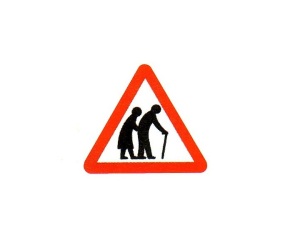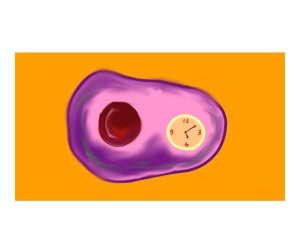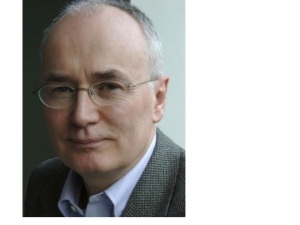All cancer chemotherapy is unpleasant, but the chemo we use for breast cancer is particularly nasty. Megan is 48 and was admitted this week with a fever and diarrhoea, a week after her third course of CEF – cyclophosphamide, epirubicin and 5-flurouracil. Her breast cancer was diagnosed a few months ago – she noticed a lump in her left breast when washing herself in the bath. Megan could tell from the face of her GP when she was examined that it was going to be bad.
Then, shortly after, there was the ultrasound, mammogram and trucut needle biopsy at the breast clinic which hurt more than she was expecting – Megan was really scared by this time.

She remembers vividly the meeting with the breast surgeon a week later, but only as a jumble of “surgery”, “partial mastectomy”, “total mastectomy”, “node clearance”, “chemotherapy”, “radiotherapy”. Her husband Jack was with her, but it didn’t make much sense to him either. They went home with a pile of leaflets and phone numbers.
The surgery went fine, everyone was really nice and caring. Then a meeting with the oncologist. She advised chemotherapy then radiotherapy. That seemed much more simple. But chemotherapy was awful. Megan felt sick and hopeless. All she could do was sit in bed and do crosswords. Just as she was starting to feel better the next round of chemo was due.

When I met her she had the look of a usually bright and cheerful person who was wondering if she could take any more. I told her that her white cell count was low, and we needed to give her intravenous antibiotics until her fever resolved and white cell count recovered.
How does cancer chemotherapy work? Why does it kill cancer cells in preference to normal cells in our body?
The normal answer I get from the young doctors and students is that chemotherapy targets rapidly-dividing cells. It really is not quite as simple as that. Breast cancer cells divide much less rapidly than bone marrow or gut epithelial cells, but chemotherapy is designed to kill all the cancer cells and leave our bone marrow and intestinal lining intact. To answer the question properly, we need to understand what makes cancer cells malignant.
We have a much better understanding of the molecular basis of cancer than we did thirty years ago. Cancer cells usually have a number of genetic abnormalities which result in the cells no longer behaving in a useful and regulated way. Cells, whether they are from breast, colon, lung or any other tissue need to behave in a regulated and responsible way. They need to co-operate with the cells around them, working together to make sure the organ works properly. Like in normal society, where people have to abide by rules which make sure everything works properly. If someone misbehaves badly, the police force and courts act to stop them doing the bad thing. Similarly, if a cell is damaged and behaves abnormally, the body has ways of making sure that is either removed or repaired. Our immune system is constantly removing abnormal cells, and all cells have a mechanism to detect and repair DNA damage. One of the main mechanisms to identify DNA damage is the p53 system. The p53 gene is turned on when DNA damage is detected. This causes p53 protein to be made and cause the cell to stop dividing until the DNA damage is repaired. If the DNA cannot be repaired the cell undergoes programmed cell death. Harsh, you may think, but necessary to prevent the cell dividing and making more abnormal cells – “here is a pistol – I think you need to go to the library and consider your options”.

The problem comes when the law enforcers are compromised. Corruption in the police force or judges is disastrous for society and for our bodies. Most common cancers have damage to the p53 gene, meaning that cells will divide even when DNA is damaged. Understanding this helps us understand why traditional chemotherapy targets cancer cells.
Cyclophosphamide is a nitrogen mustard alkylating agent which damages DNA by permanently crosslinking the two DNA strands. Nitrogen mustard has been molecule of the month: find out more about its chemisty here:
http://www.bris.ac.uk/Depts/Chemistry/MOTM/mustard/mustard.htm
In normal cells this damage is detected and prompts an activation of the p53 gene causing production of p53 protein – with consequent shutdown of cell division until the damage is repaired (or, if the damage cannot be repaired the cell commits sucicide). In cancer cells which cannot make p53, the cells will continue to divide and render them more susceptible to further DNA damage. This is because when cells are dividing the DNA is unravelled and more exposed to the damaging chemotherapy agent.
Continued division of cancer cells will also make them more susceptible to 5-fluorouracil. This drug inhibits the enzyme thymidylate synthase, preventing the production of normal thymine, one of the DNA bases. The cells are trying to divide but cannot make thymine and suffer a fate known as “thymineless death”. Cells which have normal p53 will have shut down and stopped dividing, and will not suffer in this way.
Epirubicin is a member of a group of drugs called anthracycline antibiotics, derived from steptomyces bacteria. These substances also work by binding to DNA and interfering with cell division, again targeting the breast cancer cells which are still dividing, despite having their DNA damaged, because of defective p53.
This combination of drugs work well to kill the breast cancer cells, but the shutdown of normal bone marrow production and intestinal epithelial cell division still causes a major problem, as evidenced by Megan and her neutropenic sepsis and diarrhoea. Without white cells and gut epithelial cell production she cannot not defend herself against normal germs.

Damage to the p53 gene is not the only abnormality that causes breast and other cancers. Most breast cancer cells have a large number of genetic abnormalities, many of which we know are important in making the cells cancerous, but we do not know how. There is a really good video which explains what we know about the genetic abnormalities in breast cancer and other cancers by Prof Sir Mike Stratton FRS –
Also, it is being recognised that epigenetic abnormalities are common in cancer cells, with differences in DNA methylation between normal and cancer cells. As I mentioned in a previous post, epigenetic changes are likely to be important in ageing, as well as cancer. I think there maybe an important link between these.
What causes the DNA damage in breast cells? That is a big problem to understand. It is easy to imagine how lung epithelial cells are exposed to cigarette smoke which contains carcinogens, and how colon epithelial cells may be damaged by nasty substances in our diet. But breast cells – why do they get damaged? The main risk factors for breast cancer are:
1 early menarche (onset of menstrual periods at an early age
2 late first pregnancy
3 fewer pregnancies
4 obesity
5 alcohol
How do these factors damage DNA and cause cancer? I do not know. Answers please.
Now on to the food link – garlic.

Cyclophosphamide is a nitrogen mustard. It is called that because mustard gas was thought to smell like mustard. In fact it smells more like garlic.

Garlic contains a substance known as allicin, which has a similar molecular shape to nitrogen mustard.

It has been suggested that garlic has all manner of wonderful properties to keep us healthy, including lowering cholesterol, preventing heart attacks and protecting us against infection (and vampires). The hard evidence is not there. But as Neils Bohr, the eminent physicist, said when a visiting journalist remarked “ why Professor Bohr, do you have a horseshoe above your front door – surely you cannot believe that it will bring you good luck?” replied:
“Of course I don’t believe in it, but I understand it brings you luck, whether you believe in it or not.”
That’s more or less what I think about garlic.








